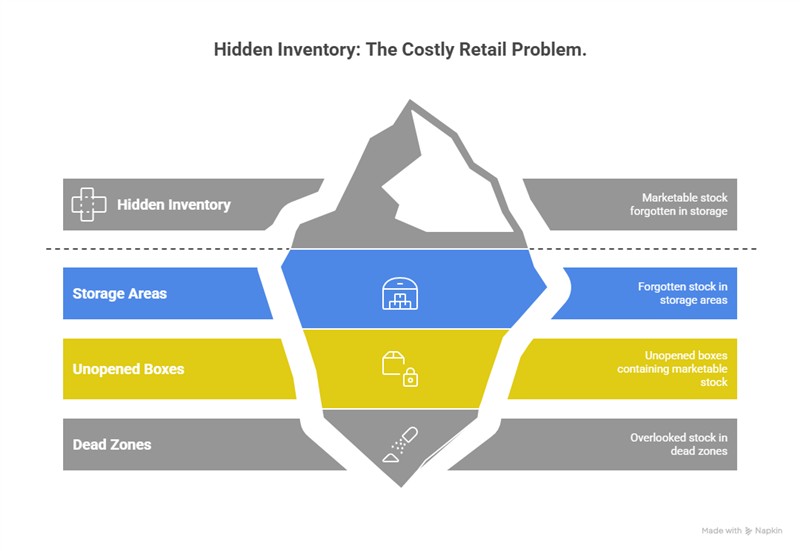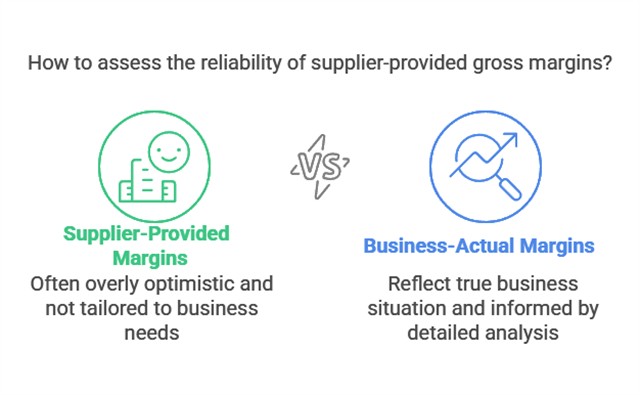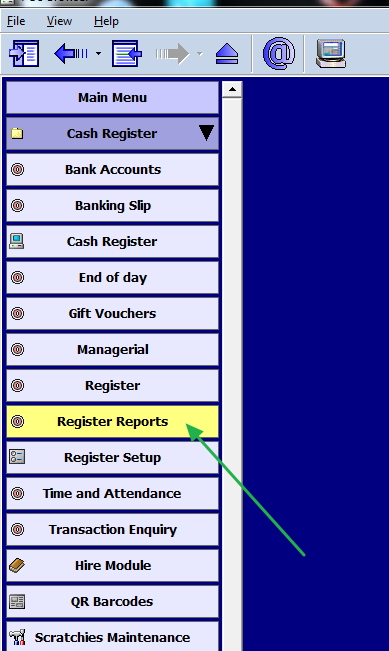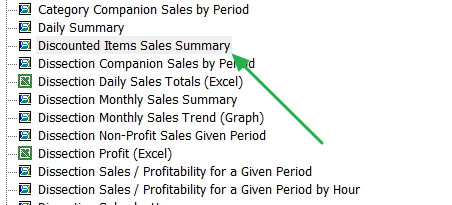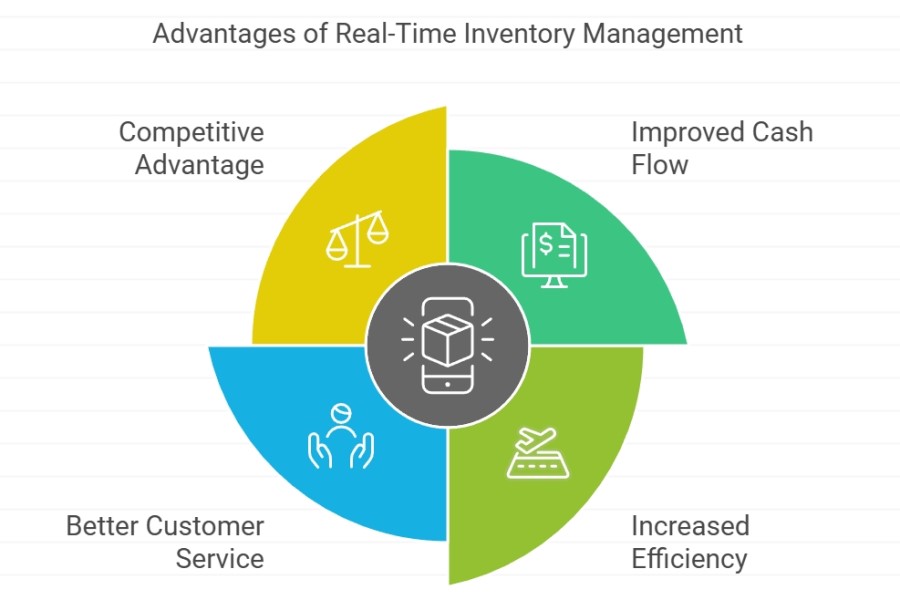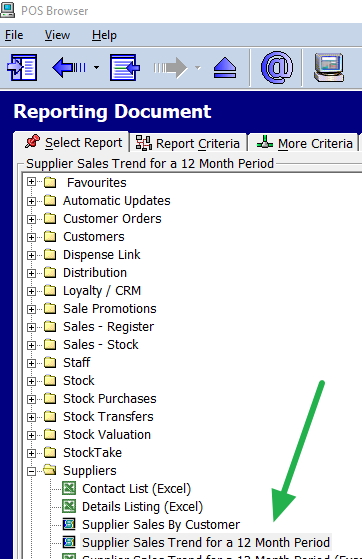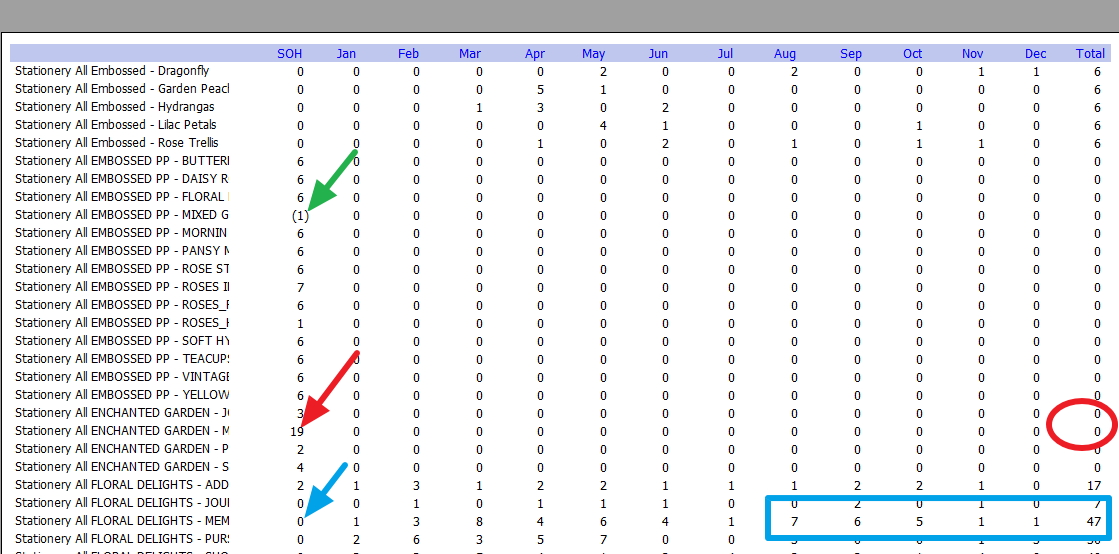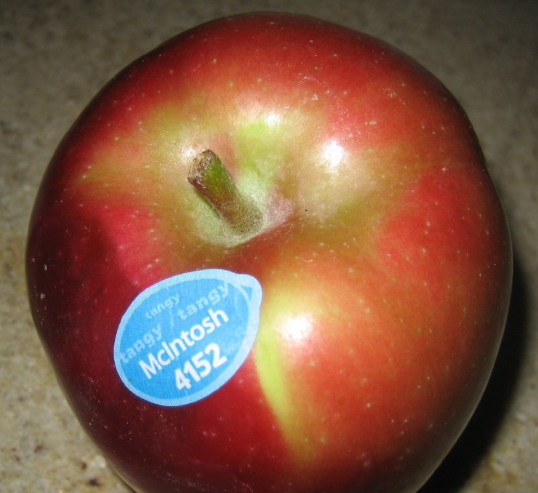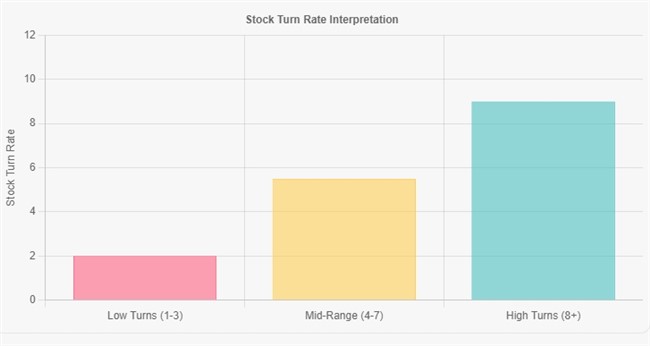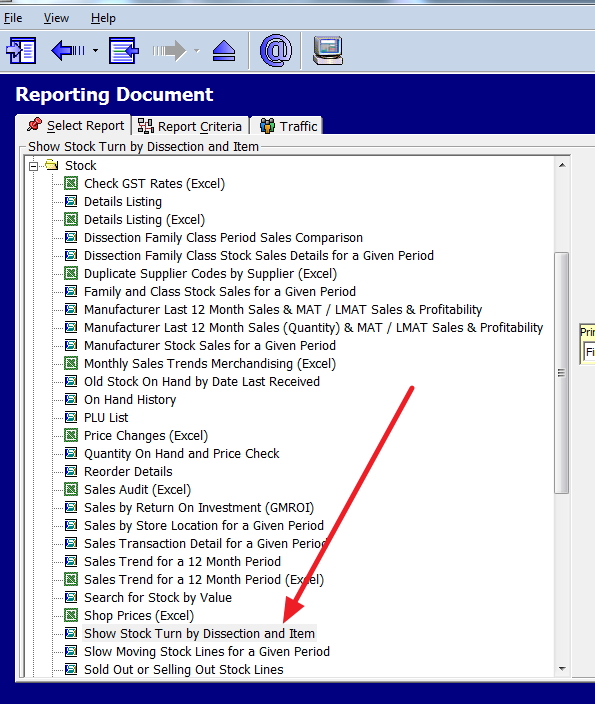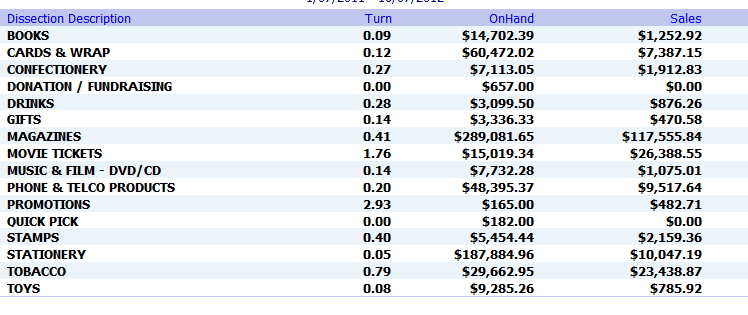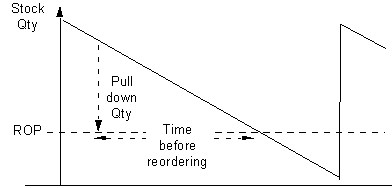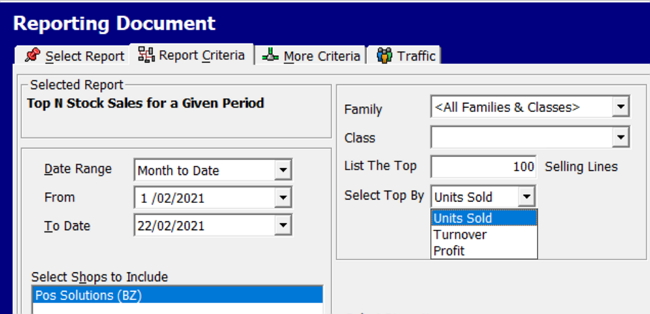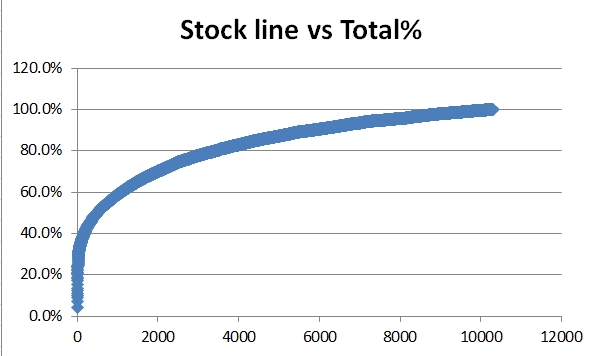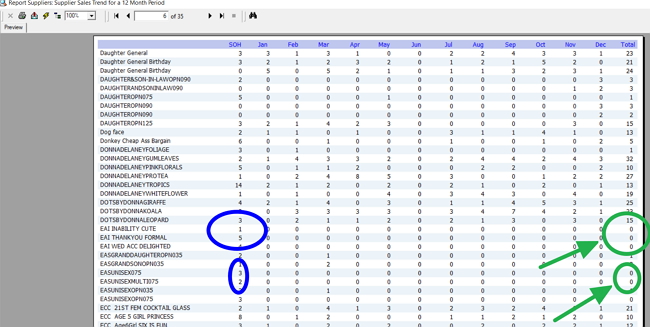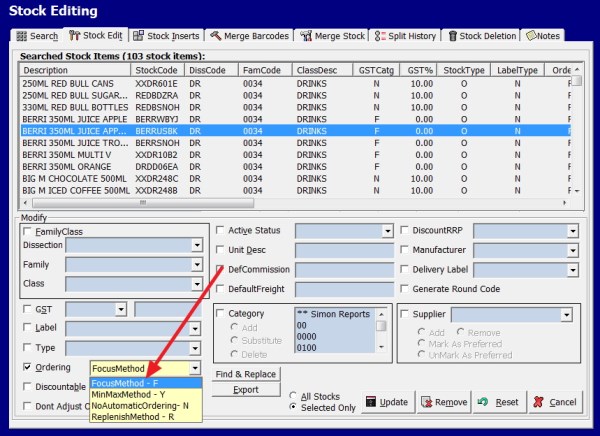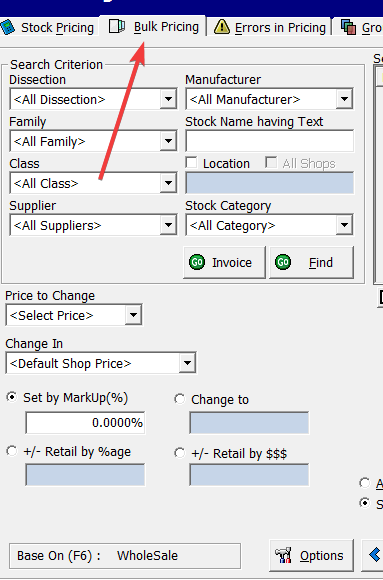Now take a minute to do a check on your stock levels

The holiday shopping season is here. Your inventory management strategy during this period can make or break your seasonal success. Having fully stocked shelves isn't just about meeting demand – it's about maintaining customer satisfaction and maximising revenue potential.
The GMROI Report: Your Stock Level Lifesaver
Your POS system's hidden gem, the GMROI (Gross Margin Return on Investment) report, provides an immediate snapshot of your stock levels. This report reveals critical insights beyond basic stock counts.
How to Access the Report
We have a unique report that is super fast to run and gives you an immediate snapshot of your stock levels.
In the Cash register report, call up the GMROI (see the selection highlighted) in your point of sale software in the reports here.
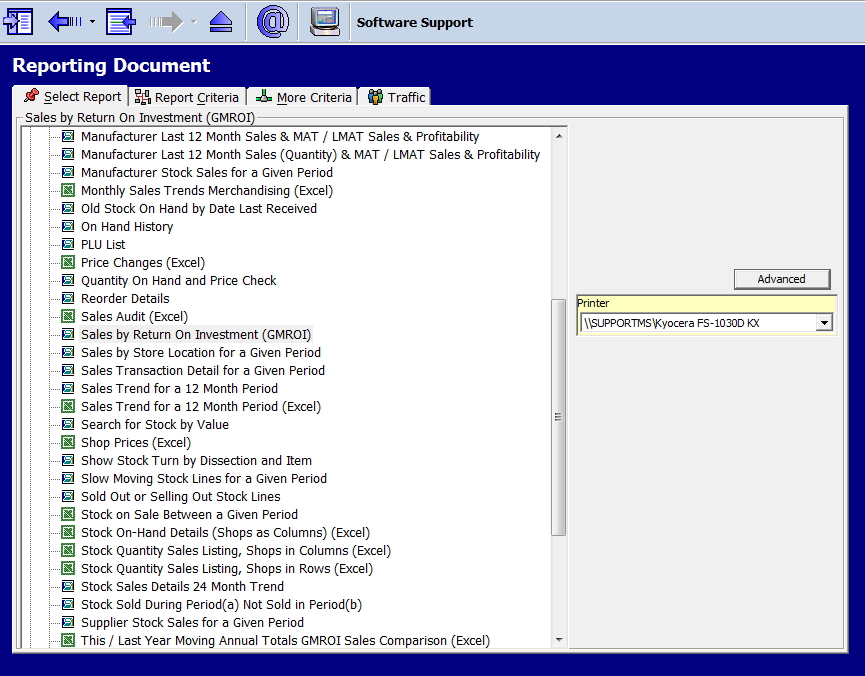
You can select the list of options you want, and I suggest you go over these options later when you have time.
You should do this by departments or suppliers, whatever makes more sense to you.
Now you get a report like this.
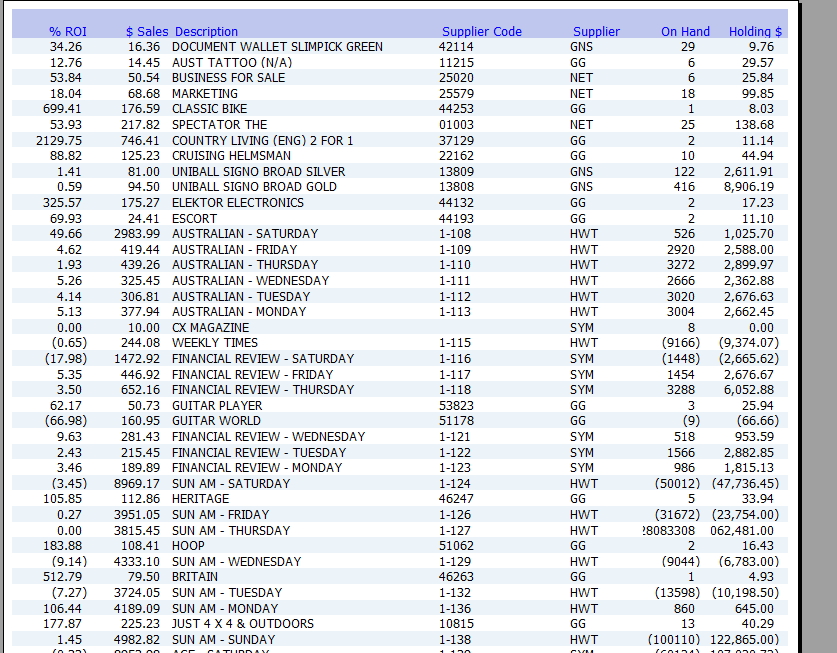
As you can see, the items are all listed.
Let’s look at it in detail:
What we are looking for are items with low on-hand figures, decent sales, and reasonable ROI%. ROI% is the return on investment. It is one of the best ways to determine how valuable your stock items are to your business. It is calculated by the (unit sold) x (Profit)/ (Average stock cost), and you need about 3.2 in the industry. However, as you can see here, there are many items above and below it.
Understanding the GMROI Report
Once you've generated the report, you'll see a list of all your items with several key metrics. Here's what to focus on:
- Stock on Hand: This shows your current inventory levels for each item.
- Sales: This indicates how well the item sells.
- ROI%: The Return on Investment percentage is crucial for determining an item's value to your business.
While these metrics provide valuable data points, interpreting them effectively is critical to making informed inventory decisions.
Interpreting the Results
When analysing your GMROI report, keep an eye out for:
Low Stock, High Sales
These are your priority items. If they have a good ROI, you'll want to reorder them immediately to avoid stockouts during peak shopping.
Reasonable ROI%
The industry standard is about 3.2, but you'll notice variations across your inventory. Your star performers are significantly above this, while those below might need attention.
Today in retail, what is suggested is to consider your stock as four different groups:
- Winners (High Sales, High ROI): Your best items. Never let these run out.
- Chasers (High Sales, Low ROI): Traffic drivers. You need to be careful here. I really suggest looking at your companion reports to look at these items. The odds are they are taking much effort, money and time for you, yet they maybe worth it, if they bring in good customers into the shop.
- Sleepers (Low Sales, High ROI): Niche gifts or premium pens.
- Bleeders (Low Sales, Low ROI): Dead stock that is costing you money. Really you sometimes have to bite the bullet and just get out of handling stock that does not sell.
Special Considerations
Since your store mixes low-margin traffic drivers (magazines/lottery) with high-margin items (gifts/cards), apply the report differently across categories:
- Some items are sale or return, so although they do not make much, you do not pay for them, although they can affect cash flow.
Taking Action
Now that you have this information at your fingertips, it's time to act:
- Identify Critical Items: Look for products with low stock levels but strong sales and good ROI. These should be your top priority for restocking.
- Place Orders: Contact your suppliers for these critical items immediately. Remember, they might be experiencing high demand from other retailers, too.
- Adjust Forecasts: Use this data to refine your sales forecasts for the holiday season. This can help you avoid similar situations in the future.
- Consider Promotions: For items with high stock levels and lower sales, consider running promotions to move inventory and free up cash for better-performing products.
The Power of Your POS System
Your POS system is more than just a cash register—it's a powerful ally in managing your retail business effectively. By regularly utilising tools like the GMROI report, you can:
- Prevent stockouts of popular items
- Optimise your inventory investment
- Improve cash flow by identifying slow-moving stock
- Enhance overall profitability by focusing on high-ROI items
Frequently Asked Questions (FAQ)
Q: What should I look for in this GMROI report?
A: look at these three columns.
- Stock on Hand (your current inventory levels)
- Sales (see how items are selling)
- ROI% (Return on Investment percentage)
Pay particular attention to items with low stock but high sales and a good ROI, as these may need immediate reordering.
Q: What's considered a good GMROI?
A: 3.2 or higher is often considered good. As this will vary by industry and product type, I suggest you evaluate the report and judge.
Q: How can I improve my GMROI?
A: Strategies include:
- Increasing sales without increasing inventory levels
- Reducing inventory levels without affecting sales
- Increasing gross margin through better pricing or supplier negotiations
- Improving inventory management to reduce excess stock
- Push high-performing products
- Implementing just-in-time inventory practices
- Using your reports for better demand forecasting
Q: How often should I run the GMROI report?
A: Run it frequently (daily or weekly) during busy seasons like holidays. In less busy periods, monthly or quarterly might suffice.
Q: How can the GMROI report help improve cash flow?
A: The report helps identify slow-moving stock. By addressing these items through promotions or adjusted ordering, you can free up cash tied in excess inventory and reinvest in better-performing products.
Written by:

Bernard Zimmermann is the founding director of POS Solutions, a leading point-of-sale system company with 45 years of industry experience, now retired and seeking new opportunities. He consults with various organisations, from small businesses to large retailers and government institutions. Bernard is passionate about helping companies optimise their operations through innovative POS technology and enabling seamless customer experiences through effective software solutions.



